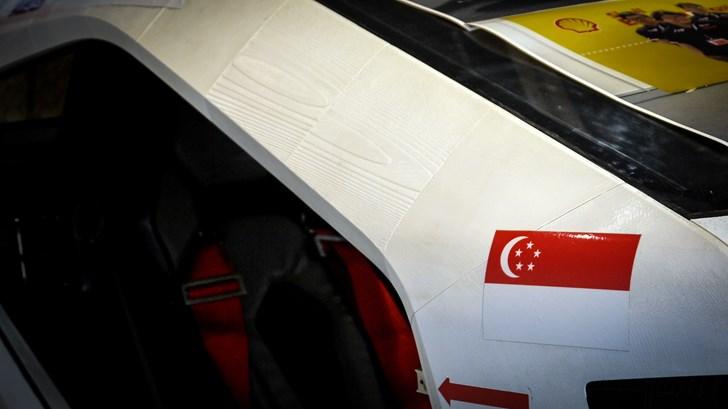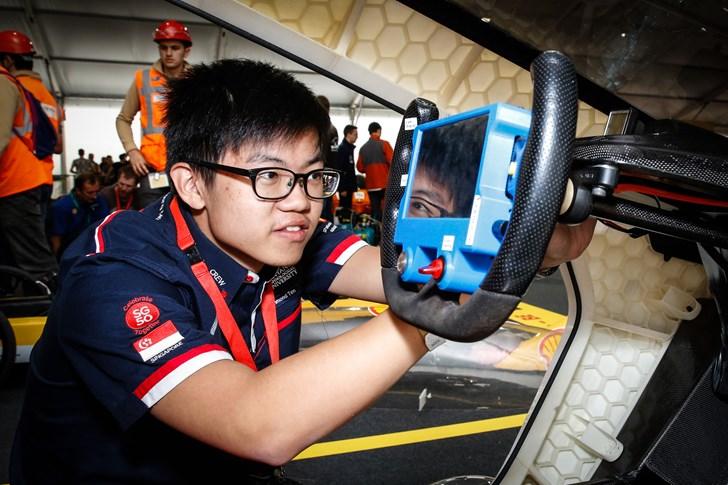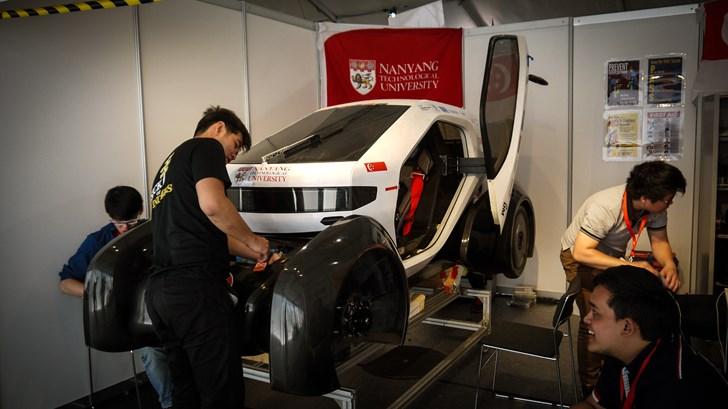The mantra of form follows function belies the complexity which makes any response to a given design directive more a chaotic system than an orderly progression. Nowhere was this more clearly in evidence than in the more than 200 entries competing in the European round of the Shell Eco-Marathon that took place in London. The challenge asks designers to create a car that can travel the farthest on a single liter of gas (slightly less than one quarter of a gallon) and a wide variety of responses poured in from 29 countries.
 The responses drew from the latest in technology, the gamut of available materials, and a broad notion of shape, size, and style. The UK’s Aston University team brought a flat packed vehicle made primarily out of wood while the entry from Indonesia’s Institut Teknologi Sepuluh Nopember used a great deal of PVC roofing combined with a liberal application of gaffer’s tape. Other teams used high-tech carbon to keep the weight low or composite panels made from natural resin and biodegradable silk.
The responses drew from the latest in technology, the gamut of available materials, and a broad notion of shape, size, and style. The UK’s Aston University team brought a flat packed vehicle made primarily out of wood while the entry from Indonesia’s Institut Teknologi Sepuluh Nopember used a great deal of PVC roofing combined with a liberal application of gaffer’s tape. Other teams used high-tech carbon to keep the weight low or composite panels made from natural resin and biodegradable silk.
The pinnacle of the competition was occupied by a car called CityJoule that was entered by a team from the University of Nantes working in conjunction with a local high school. Inspired by the shape of a drop of water and with a drag coefficient of less than 0.1, it is quite possibly the most aerodynamic car in existence. The car, complete with powertrain, wheels, and tires, weighs in at just under 80 kg (176 pounds).
 While a car titled the TIM 07, which was created as part of a collaboration between two colleges in Tolouse, harnessed the skills of CNC machines to create the CAD designed exterior forms, a group of students at Nanyang Technological University in Singapore decided to use 3D printing to its fullest advantage in the creation of their concept car. The Indonesian car, named Venture 8, was entered in the urban concept category, a class that requires the car resemble a roadworthy vehicle and have features such as four wheels, windshield wiper(s), and running lights.
While a car titled the TIM 07, which was created as part of a collaboration between two colleges in Tolouse, harnessed the skills of CNC machines to create the CAD designed exterior forms, a group of students at Nanyang Technological University in Singapore decided to use 3D printing to its fullest advantage in the creation of their concept car. The Indonesian car, named Venture 8, was entered in the urban concept category, a class that requires the car resemble a roadworthy vehicle and have features such as four wheels, windshield wiper(s), and running lights.
An additional feature that makes this car unique among the competition is that its carbon fiber chassis is fully drivable without the body. Much of the Venture 8 was printed and the 150 separate parts where then glued together, but the team was interested in investigating more than the possibility for producing a single vehicle using 3D printing. Instead, they were also exploring the possibilities for the creation of fully customizable vehicles that could be placed onto the chassis as desired. Other teams also used 3D printing to create parts either functional or aesthetic, such as a plastic steering rack.
The winning prototype out of all of the different categories managed to travel 2,606 km (1,619 miles) on a single liter, while the best Urban Concept Car was able to travel 446 km (277 miles). Discuss further in the 3D Printed Car forum over at 3DPB.com.
[Source & Images: Car Design News]
Subscribe to Our Email Newsletter
Stay up-to-date on all the latest news from the 3D printing industry and receive information and offers from third party vendors.
You May Also Like
Gorilla Sports GE’s First 3D Printed Titanium Cast
How do you help a gorilla with a broken arm? Sounds like the start of a bad joke a zookeeper might tell, but it’s an actual dilemma recently faced by...
Nylon 3D Printed Parts Made More Functional with Coatings & Colors
Parts 3D printed from polyamide (PA, Nylon) 12 using powder bed fusion (PBF) are a mainstay in the additive manufacturing (AM) industry. While post-finishing processes have improved the porosity of...
$25M to Back Sintavia’s Largest Expansion of Metal 3D Printing Capacity Since 2019
Sintavia, the digital manufacturing company specializing in mission-critical parts for strategic sectors, announced a $25 million investment to increase its production capacity, the largest expansion to its operations since 2019....
Velo3D Initiates Public Offering in a Bid to Strengthen Financial Foundations and Drive Future Growth
Velo3D (NYSE: VLD) has been among a number of publicly traded 3D printing firms that have attempted to weather the current macroeconomic climate. After posting a challenging financial report for 2023,...
































